(Ver debajo para español)
We have to inquire of the Lord – what does God want me to do? We have to make an effort to try and figure out what God wants us to do. We should take time to meditate and pray over it, so the Holy Spirit can give us thoughts and feelings. We can also understand that our conscience is connected to the Holy Spirit in that He amplifies this inner voice to inspire us with what God wants us to do.
God created man and woman in His image. We are able to reason, use logic, etc. – we are gifted to make some decisions ourselves. Any decision that has to do with our salvation is what the Holy Spirit wants to speak to us about. That could include decisions about where we live, who our partner in life is, etc. He helps us to see the right path.
When we inquire of God what He wants, and we come to a moment where we say, “This could be the path for me,” – this is how we know the path God wants us to be on. When something is just our own idea, we might see doors closing or opportunities not coming. But paths open when we start to align with God. And the more we read Scripture, the more we can understand how Jesus was and how He thinks, the more we absorb in the divine service, then the more we will come to the conclusion that the Lord wants us to come to. This gets easier the older we get and the more experience we have.
Reflecting on God’s presence in our lives and how He has helped us also gives us joy and reassurance as we continue to make decisions that align with God’s will.
And when we finally do discover what God wants of us, then we must trust Him in that He’s doing everything to bring us closer to Him.
ESPAÑOL
Tenemos que preguntarle al Señor: ¿qué quieres que haga? Tenemos que hacer un esfuerzo para tratar de averiguar lo que Dios quiere que hagamos. Debemos tomar tiempo para meditar y orar sobre ello, para que el Espíritu Santo pueda proporcionarnos pensamientos y sentimientos. También podemos entender que nuestra conciencia está conectada con el Espíritu Santo en el sentido de que Él amplifica esta voz interior para inspirarnos con lo que Dios quiere que hagamos.
Dios creó al hombre y a la mujer a Su imagen. Somos capaces de razonar, usar la lógica, etc. Estamos dotados para tomar algunas decisiones nosotros mismos. Cualquier decisión que tenga que ver con nuestra salvación es de lo que el Espíritu Santo nos quiere hablar. Eso podría incluir decisiones sobre dónde vivir, quién es nuestro compañero en la vida, etc. Él nos ayuda a ver el camino correcto.
Cuando le preguntamos a Dios qué quiere Él y llegamos a un momento en el que decimos: «Este podría ser el camino para mí», así es como sabemos el camino en el que Dios quiere que estemos. Cuando algo es solo nuestra propia idea, es posible que veamos que las puertas se cierran o que las oportunidades no llegan. Pero los caminos se abren cuando empezamos a alinearnos con Dios. Y cuanto más leemos las Escrituras, más podemos entender cómo era Jesús y cómo piensa, más absorbemos del servicio divino, más llegaremos a la conclusión a la que el Señor quiere que lleguemos. Esto se vuelve más fácil a medida que envejecemos y tenemos más experiencia.
Reflexionar sobre la presencia de Dios en nuestras vidas y cómo nos ha ayudado también nos da alegría y tranquilidad a medida que continuamos tomando decisiones que se alinean con la voluntad de Dios.
Y cuando finalmente descubrimos lo que Dios quiere de nosotros, entonces debemos confiar en Él, en que Él está haciendo todo lo posible para acercarnos a Él.

Episode 95
Listening to the Holy Spirit
More from
For Your Journey





